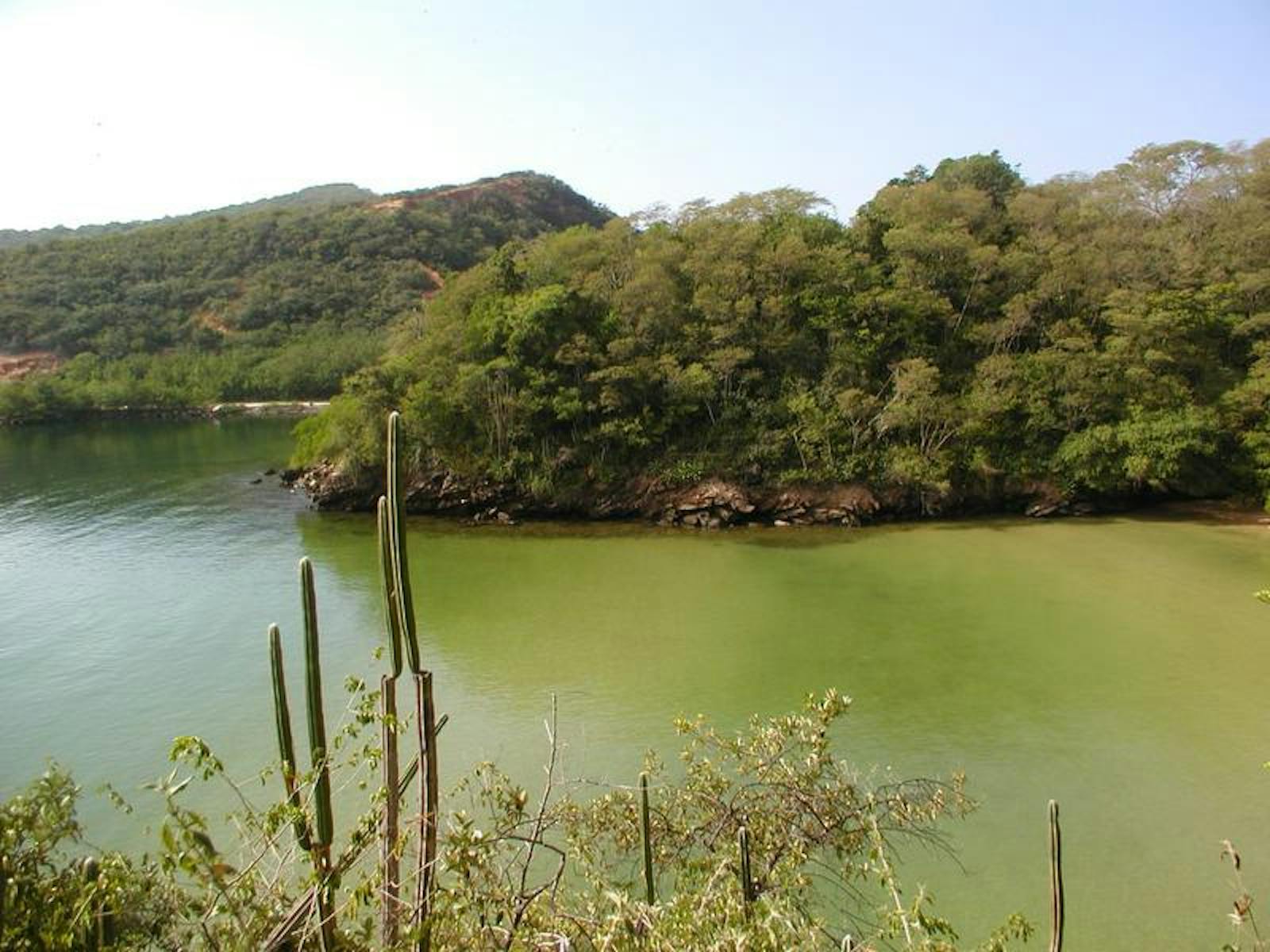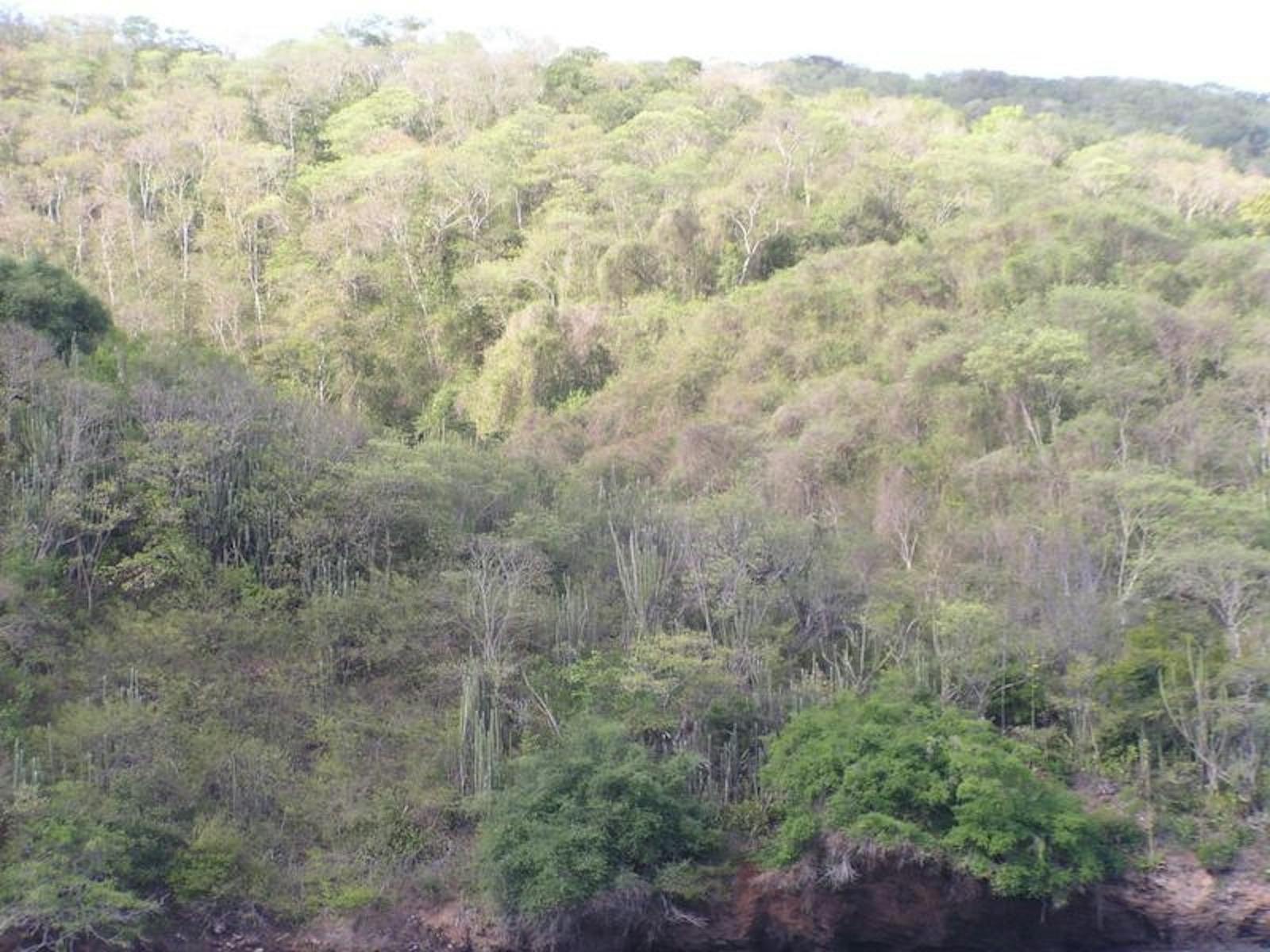Trinidad and Tobago Dry Forests
The ecoregion’s land area is provided in units of 1,000 hectares. The protection goal is the Global Safety Net (GSN1) area for the given ecoregion. The protection level indicates the percentage of the GSN goal that is currently protected on a scale of 0-10.
Bioregion: Guianan Forests & Savanna (NT21)
Realm: Southern America
Ecoregion Size (1000 ha):
27
Ecoregion ID:
548
Conservation Target:
38%
Protection Level:
6
States: Trinidad and Tobago
The Trinidad and Tobago Dry Forests ecoregion is home to the nocturnal and endangered Lesser Antilles robber frog. This small brown frog species lives within the bushes and on the ground in both dry and wet forest ecoregions and is endemic to these small Caribbean islands. It lay its eggs inside of bromeliads “reservoirs” so that the dry climate does not impact their survival. These small frogs clamber through the leaf litter on the forest floor looking for insects and when the time is right, a mate. Their calls can be easily heard, although their size and camouflage color make them very difficult to see.
.jpg)
The flagship species of the Trinidad and Tobago Dry Forests ecoregion Lesser Antilles robber frog. Image credit: Creative Commons
This ecoregion covers a small portion of land in the northwest of Trinidad and the very northern end of Tobago. Both islands lie closely to the South American mainland, from which they were separated 1,500 and 11,000 years respectively. This dry forests ecoregion comprises only about 5% of the land area of the island nation of Trinidad and Tobago. The two islands have a combined land area of 5,128 km2. Trinidad and Tobago are the most southerly of the Caribbean’s Lesser Antilles Islands.
The ecoregion is characterized by open forests interspersed with grass and other low foliage, owing to the lack of a proper canopy. There is a greater proportion of deciduous trees and fewer large trees. Mosses and epiphytes are not common owing to the greatly reduced rainfall. Prominent trees in this area include dotted lancepod, gumbo-limbo, catcaw blackbead, saltfish wood, and salmwood.
The proximity to and the recent geological split from the South American mainland contributed to the exceptionally high species richness-to-area ratio in Trinidad and Tobago. Nonetheless, little information exists specific to the flora and fauna of this relatively small dry forests ecoregion; most data also include the larger moist forests ecoregion that cover most of the islands. The two islands have approximately 2,200 species of flowering plants, 110 that are believed to be endemic to the island. There are over 400 species of birds, 100 species of mammals, 85 species of reptiles and 30 species of amphibians.
The influx of bird species relates to Trinidad being part of a main migrant route southward down the chain of the Antilles from North America. A few of these avian species will spill over into Trinidad, but rarely Tobago. Bats account for over half of the mammal species on the islands. The rest are marsupials, edentates, rodents, primates, and some deers. About 40 species of snakes can be found in Trinidad with fewer occurring in Tobago.
The Policy for the Establishment and Management of a National Park System in Trinidad and Tobago identified 61 areas that need protection. This includes 8 proposed national parks covering almost half the proposed protected areas system and much of this small ecoregion's remaining vegetated areas. In the early 1980s the level of conservation management being conducted in the various protected areas was minimal. A decade later patrolling in wildlife sanctuaries was still reported to be inadequate, and only Caroni Swamp National Park had active habitat management and a warden system.
Most of this ecoregion is located in northwest Trinidad surrounding the capital city of Port of Spain, the industrial and commercial center and focal point for tourism in the country. Consequently, the surrounding forests have suffered significant alteration due to population growth and agricultural and industrial development. Habitat alterations that have impacted this ecoregion and the whole of Trinidad and Tobago include activities such as crop production of cocoa, coconuts, rice, sugarcane, citrus, and vegetables, hillside cropping, slash and burn cropping, fire climaxes, and plantation forestry of pine and teak. Topsoil loss due to mining is also a concern.
The priority conservation actions for the next decade are to: 1) integrate natural resource management into agricultural practices; 2) increase staffing of parks and patrols; and 3) strengthen legislation to adequately deal with illegal foresting among other harmful practices.
Citations
1. Armstrong, S. 2019. Islands of Trinidad and Tobago in the Caribbean. https://www.worldwildlife.org/ecoregions/nt0231 Accessed March 5, 2019
2. Bacon, P. R., and R. P. French. 1972. The wildlife sanctuaries of Trinidad and Tobago. Wildlife Conservation Committee, Ministry of Agriculture, Lands and Fisheries.
3. Kenny, J., P. Comeau, and L. Katwaru. 1997. A Survey of Biological Diversity, Trinidad and Tobago. United Nations Development Programme, Port of Spain.
4. Jerry Hardy, Abraham Mijares, Enrique La Marca 2004. Pristimantis urichi. The IUCN Red List of Threatened Species 2004: e.T57027A11570743. http://dx.doi.org/10.2305/IUCN.UK.2004.RLTS.T57027A11570743.en. Accessed March 5, 2019




